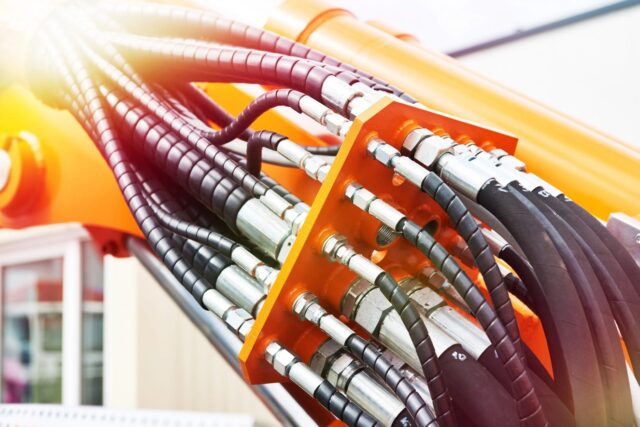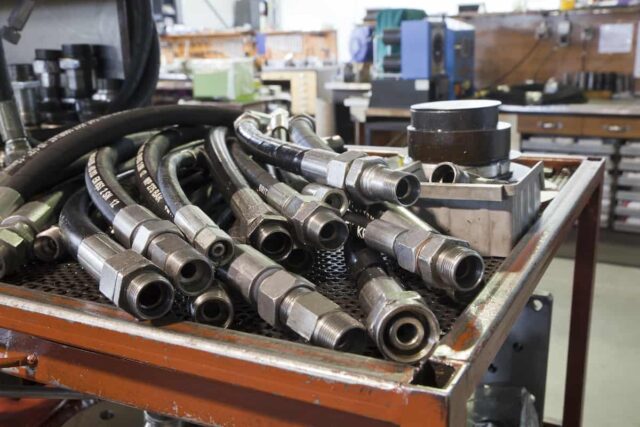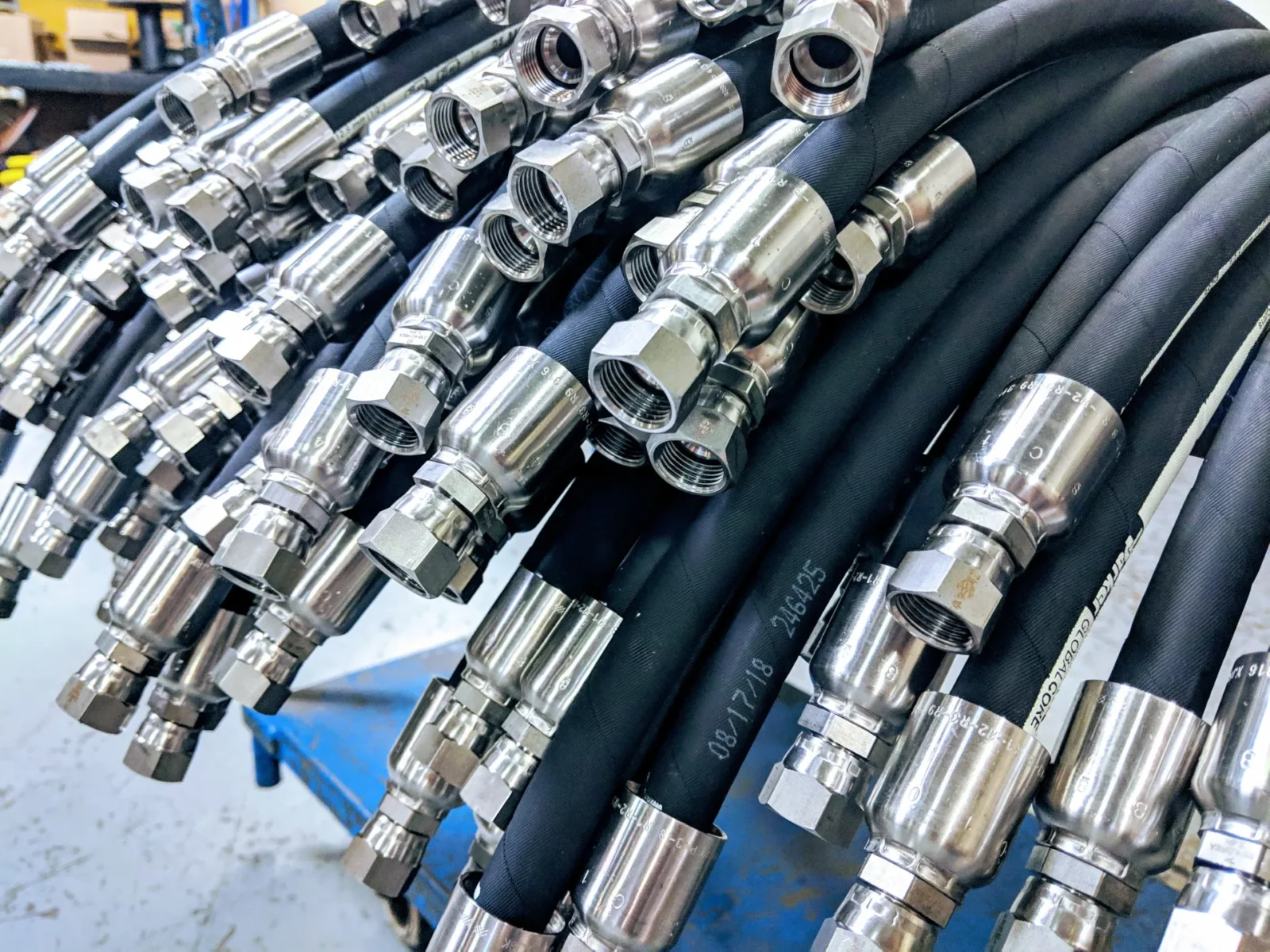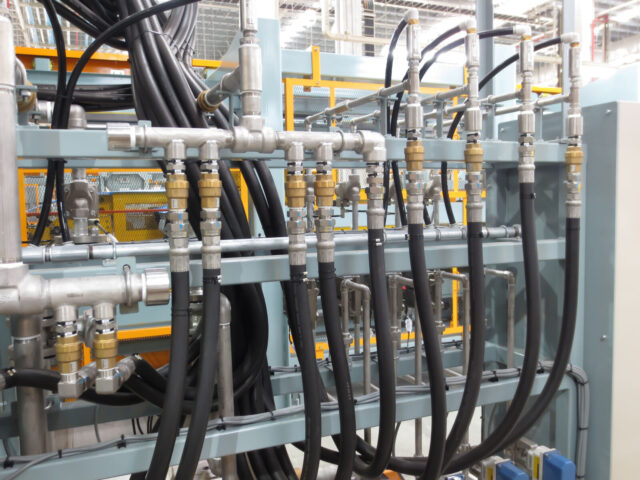
Fluid power systems play a critical role in various industries, powering a wide range of machinery and equipment. Among the essential components of these systems, hydraulic hoses are the unsung heroes that enable the seamless transfer of fluids.
As technology continues to advance at a rapid pace, the future of hydraulic industrial hose applications holds exciting possibilities. In this article, we will explore the current state of hydraulic hose applications, delve into recent advancements in technology, and highlight emerging trends that are shaping the future of this vital industry.
Current State of Applications

The current landscape of hydraulic hose applications is characterized by their extensive use in numerous industries such as construction, agriculture, mining, and manufacturing. Hydraulic hoses are widely employed in heavy machinery, equipment, and vehicles, where they transmit power efficiently and reliably. These hoses facilitate the movement of hydraulic fluids, allowing precise control and operation of various mechanical components.
From hydraulic excavators to agricultural machinery, hydraulic hoses provide the muscle behind many critical tasks. However, as technology progresses, the industry is witnessing significant advancements that enhance durability, efficiency, and application-specific solutions.
Advancements in Technology
In recent years, remarkable progress has been made in hydraulic hose technology, paving the way for more reliable and versatile applications. One notable advancement is the development of hoses with increased durability and efficiency, allowing them to withstand higher pressure, extreme temperatures, and harsh environments.
Manufacturers are utilizing innovative materials and manufacturing techniques to create hoses with superior resistance to abrasion, chemicals, and impact, extending their service life and reducing maintenance costs.
Increased Durability and Efficiency
Hydraulic hoses of the future are becoming more durable and efficient through the adoption of advanced materials and design techniques. For instance, the use of synthetic polymers, such as thermoplastic and synthetic rubber compounds, improves resistance to wear, weathering, and corrosion.
Reinforced layers of high-strength materials, like steel or aramid fibers, enhance the hoses’ burst strength and flexibility. These advancements enable hydraulic hoses to operate at higher pressures, thereby increasing their overall efficiency and reliability.
Miniaturization and Flexibility in Design

Another trend driving the future of hydraulic hose applications is the miniaturization and flexibility of hose designs. As technology evolves, machinery and equipment are becoming increasingly compact, requiring smaller, lighter, and more flexible hydraulic hoses. This demand is met through the development of slim-profile hoses that can navigate tight spaces and intricate machinery configurations with ease.
Advancements in manufacturing processes have enabled the production of hoses with reduced bend radii, allowing greater flexibility without sacrificing performance. These compact and flexible hoses open up new possibilities for integrating hydraulic power in modern, space-constrained applications.
Environmental Considerations in Application
As sustainability becomes a top priority for industries across the globe, hydraulic hose applications are also evolving to address environmental concerns. Manufacturers are developing hoses that are more environmentally friendly by reducing the use of hazardous materials and improving recyclability.
There is an increasing focus on developing fluids that are biodegradable and have a lower environmental impact. By adopting eco-friendly hoses and fluids, industries can minimize their carbon footprint and contribute to a greener future.
Integration of Sensors and Smart Technologies
The integration of sensors and smart technologies is another exciting trend shaping the future of applications. By incorporating sensors directly into hydraulic hoses, it becomes possible to monitor critical parameters such as pressure, temperature, and fluid flow in real-time. This data can then be analyzed to detect anomalies, predict maintenance needs, and optimize system performance.
The emergence of smart technologies like the Internet of Things (IoT) enables remote monitoring and control of systems, improving operational efficiency and reducing downtime. The integration of sensors and smart technologies not only enhances the safety and reliability of hydraulic systems but also enables proactive maintenance and predictive analytics.
Application-Specific Solutions

In the future, they will become increasingly tailored to specific application requirements. As industries demand greater precision, efficiency, and performance, customized hydraulic hose solutions are gaining prominence. Manufacturers are developing hoses optimized for specific industries, such as construction, agriculture, and manufacturing, considering factors like temperature range, pressure rating, flexibility, and compatibility with various fluids. Application-specific varieties not only improve overall system performance but also contribute to cost savings by eliminating the need for over-engineering or underperforming hoses.
Emerging Trends in Applications
In addition to the aforementioned advancements, several emerging trends are poised to shape the future of hydraulic hose applications in industrial settings. One such trend is the integration of intelligent and self-diagnostic features. These advanced hoses will be capable of self-monitoring, detecting faults, and alerting operators in real-time, thereby enhancing safety and reducing maintenance costs.
The development of self-healing hoses, which automatically repair minor leaks or damages, holds promise for improving system reliability and reducing downtime. Additionally, the use of 3D printing technology in manufacturing allows for rapid prototyping and customization, enabling faster deployment of innovative solutions.
The exploration of nanotechnology shows promising potential, too. Nanomaterials offer enhanced properties such as increased strength, improved heat resistance, and better chemical stability. By incorporating nanotechnology into manufacturing, the industry can unlock new levels of performance and efficiency. Advancements in data analytics and artificial intelligence (AI) are expected to revolutionize hydraulic systems by enabling real-time optimization, predictive maintenance, and autonomous decision-making.
As industries embrace these emerging technologies, the future of hydraulic hose applications holds the promise of unprecedented precision, reliability, and sustainability, shaping a world where fluid power drives innovation and efficiency in all corners of the industrial landscape.
Summary
The future is brimming with exciting possibilities driven by advancements in technology and industry demands. With increased durability and efficiency, miniaturization and flexibility in design, environmental considerations, integration of sensors and smart technologies, and application-specific solutions, they are poised to play an even more vital role in powering industries across the globe. As emerging trends continue to shape this dynamic industry, it is clear that hydraulic hoses will remain an indispensable component of fluid power systems, driving innovation, efficiency, and sustainability in a diverse range of applications.









